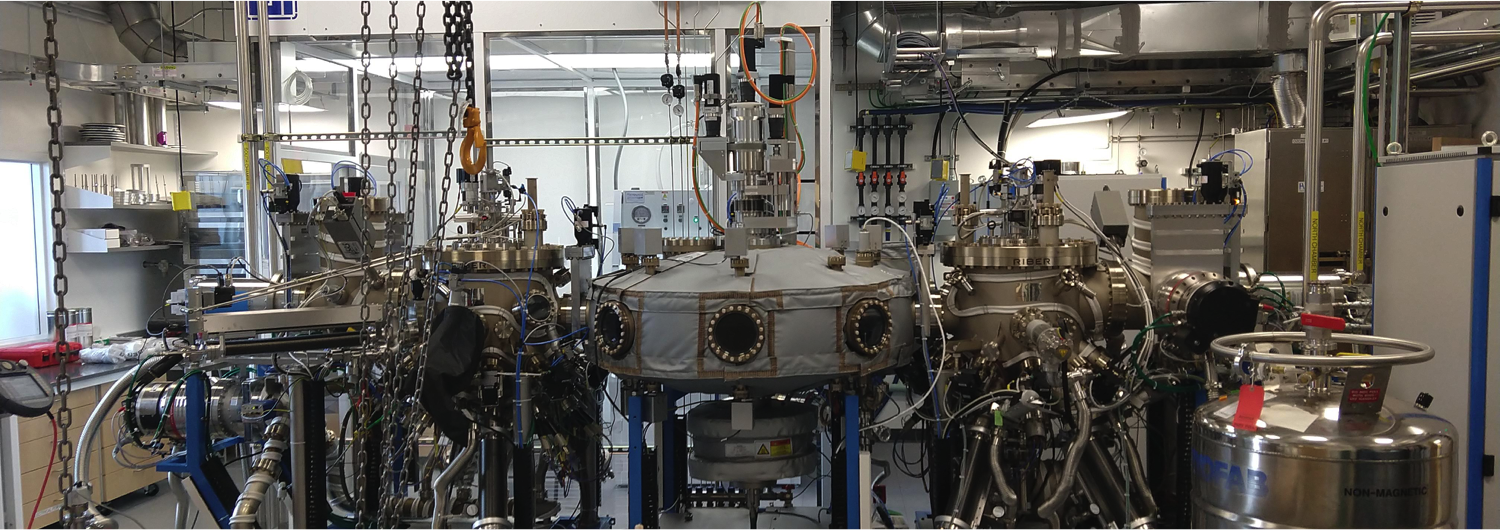Emergent Phenomena in Oxide Thin Films
Materials systems with many strongly interacting degrees of freedom can host some of the most exotic physical states known, ranging from superconductivity to topological phases.One of the hallmarks of these quantum materials is the ability for a small perturbation to dramatically change the ground state. In thin films, the interface between two distinct materials forms a playground to engineer such emergent states. Specifically—and in contrast to bulk crystals—such an abrupt heterointerface can utilize the broken symmetry/reduced dimensionality inherent to the interface as well as induce chemical potential offsets, epitaxial strain and provide proximity to functional phases.
Work in the Mundy group will design, synthesize and probe such emergent phenomena in complex oxide thin films. Initial efforts will be particularly focused on using thin film epitaxy to construct metastable materials, with an emphasis on materials with strong spin frustration/exotic magnetic properties and novel superconductors.
Facilities
 Our primary synthesis tool is a dual chamber reactive oxide molecular-beam epitaxy instrument. Akin to "spray painting with atoms", molecular-beam epitaxy allows for the deposition of a single sheet of atoms and for complex structures to be constructed atomic-plane by atomic-plane. Our tool is equipped with a total of 22 effusion cells, an e-beam reactor for low vapor pressure elements, a custom distilled ozone delivery system from Heeg Vacuum Engineering and automated sample transfer to provide rapid, high-throughput synthesis of a wide range of oxide thin films and heterostructures.
Our primary synthesis tool is a dual chamber reactive oxide molecular-beam epitaxy instrument. Akin to "spray painting with atoms", molecular-beam epitaxy allows for the deposition of a single sheet of atoms and for complex structures to be constructed atomic-plane by atomic-plane. Our tool is equipped with a total of 22 effusion cells, an e-beam reactor for low vapor pressure elements, a custom distilled ozone delivery system from Heeg Vacuum Engineering and automated sample transfer to provide rapid, high-throughput synthesis of a wide range of oxide thin films and heterostructures.
We employ bulk and local probes for characterizing the structural, electronic and magnetic properties of our synthesized films. Our lab is equipped with a 9T QuantumDesign PPMS system with a dilution refrigeration unit, a Panalytical x-ray diffraction system with a 2-D area detector and an Asylum MFP-3D atomic-force microscope.
Our group will also use the aberration-corrected electron microscopy facility at the Harvard Center for Nanoscale systems. These tools will allow us to track local distortions in our buried interfaces to the picoscale. We will also use electron energy loss spectroscopy on the electron microscopy to probe the chemical composition, charge transfer and bonding atom-by-atom in our materials. We will correlate these local measurements to the macroscopic electronic and magnetic properties.
Finally, our group makes use of shared experimental facilities around the world including the NIST Center for Neutron Research and Advanced Light Source at Lawrence Berkeley National Laboratory to characterize the emergent properties in our synthesized materials.